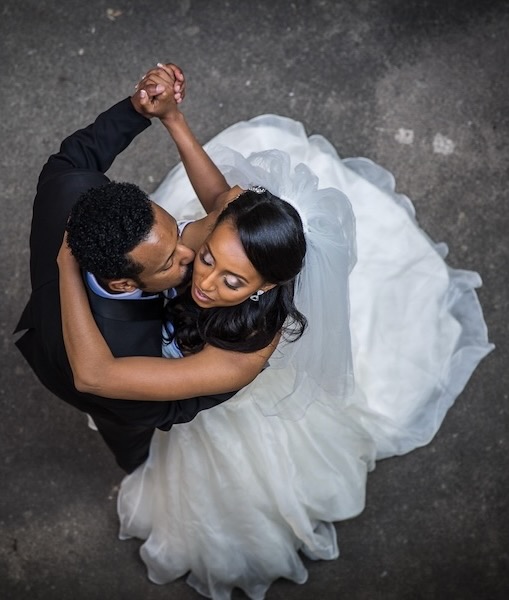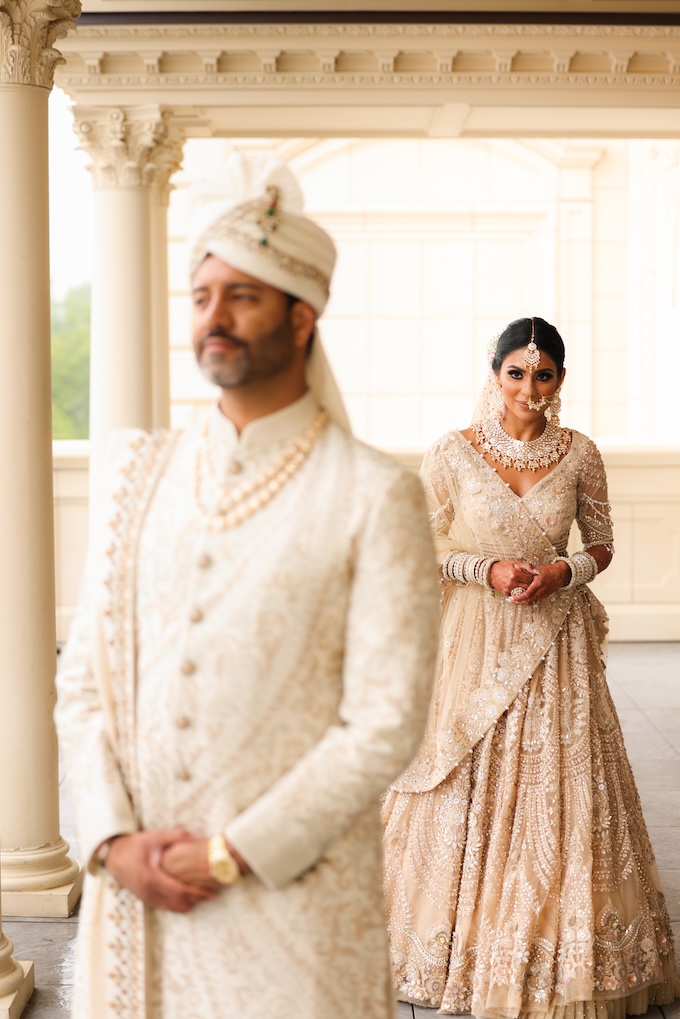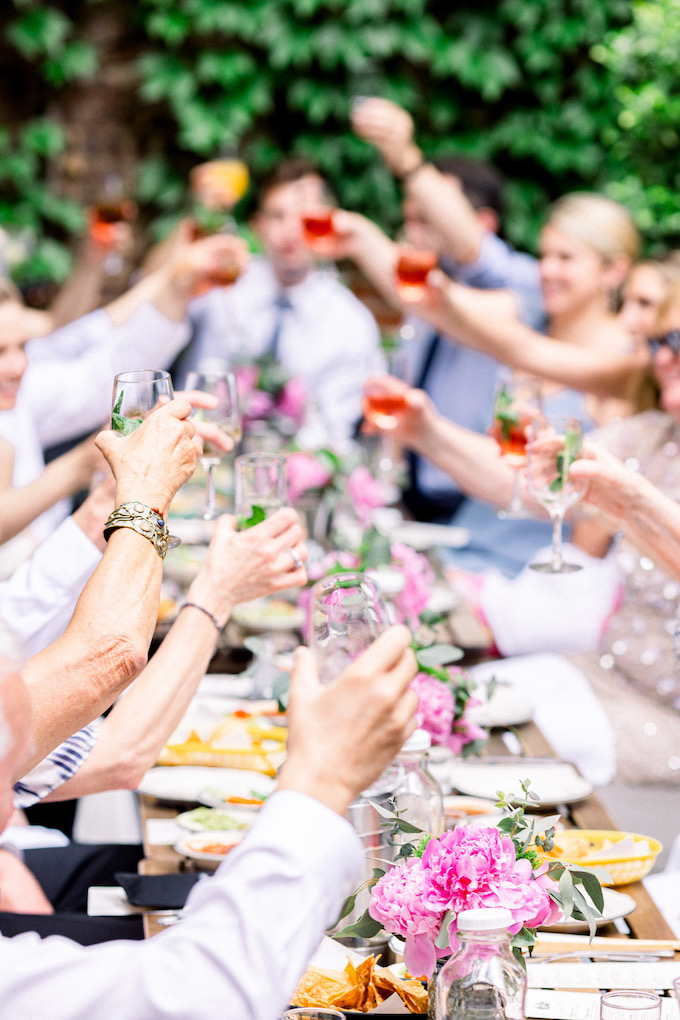Weddings
“Diversity is Not a Trend. It’s Life.”
September 4, 2019
Diversity is not a new concept to embrace for Nadiya Nacorda. The child of a Filipino father and a South African mother, Nacorda’s very personhood is distinctive from the white, heteronormative archetypes she encountered in the mass media during her childhood in Detroit. Although celebrating diversity is now popular in the wedding industry, Nacorda notes that for her, “diversity is not a trend. It’s life.”
Which is why when she founded Imani Photo Co., a wedding photography business emphasizing cultural diversity and inclusivity, she focused on documenting the love stories of authentic and non-traditional partners.
The oldest of six children, Nacorda first started taking photographs when she was in high school. The first subjects she turned her camera to were her youngest brother and sister, who are now 13 and 15. “I was looking at them at ages 1 and 3 and remembering all of these photos that were taken of me at that age,” she says. “I made photographs of them as a way of writing them into history.”
At the Virginia Commonwealth University School of the Arts, where she received her BFA in 2014, Nacorda focused on photography. Like many students these days, she worked almost full-time in retail to support her studies. When she graduated, she needed to find a practical way to support herself. A friend suggested one way to make money with her degree was by doing wedding photography.
“I started doing more research, and found that a lot of people were having conversations around wedding photography in ways that were really new”—in terms of celebrating couples from underrepresented communities as opposed to wealthy, white, skinny couples—“and I felt really aligned with what they were saying,” she says. In particular, she cites the work of fellow photographers Shawnee Custalow, Carly Romeo and Oriana Koren, as well as publications like A Practical Wedding and Catalyst Wedding Co.
Nacorda decided to pursue it and placed ads on Craigslist offering her services. She attracted her first few clients by offering very inexpensive shoots—she charged $75 an hour, or a couple of hundred dollars for an event. “I shot a wedding by myself before I ever worked as a second shooter at a wedding, which makes a lot of people very surprised,” she acknowledges, laughing.
Learning on the job fit in with the vibe of the first few weddings that she shot, which were very DIY. Her clients were couples doing everything from the flower arrangements to the table settings by themselves. Generally, Nacorda would shoot alone for the entire event, buoyed by adrenaline. “I was so excited, I wasn’t thinking about it as work,” she says. “The next thing I knew, eight hours had passed by.”
From the very beginning, it was important to Nacorda to attract a diverse clientele. Once she had a portfolio together from her early wedding, she began placing ads on websites like Junebug Weddings and A Practical Wedding. The language she used in her ads was very pointed. “I said things like, ‘looking to service all with a focus on multiculturalism,’” she notes.
On the site she had set up for her business, Imani Photo Co.—Imani is her middle name—Nacorda talks about her background growing up in a mixed-race family. “I think when people read that, they see themselves and connect with it,” she says. “They’re just attracted to someone who can empathize and has something relatable to them.”
Even more important was the imagery she shared. “I wanted my words to match up to the work,” she says. A lot of wedding photographers say they focus on diversity, Nacorda notes, but their social media pages tell a different story, showcasing primarily white, heterosexual couples. “It reaches a different part of our brain when someone sees him- or herself reflected back in a photograph,” she notes.
A brief scroll through Nacorda’s social media pages show an array of different types of couples, capturing all different races and types of sexuality. Her commitment to actually following through on her word has led to success. At her busiest, she shoots ten weddings per year, charging anywhere between $4,000 and $5,000 for a package that can include an album, depending on what the couple wants. She also shoots elopements, engagements and love stories. Generally, she offers an array of options for her clients, describing her services as the “Chipotle of wedding photography.”
Capturing diverse images is not only about focusing on diverse couples, Nacorda says. It’s also about deconstructing Western notions of beauty and challenging the way that people, especially black and brown people, are generally depicted in imagery. Nacorda notes that black people, especially black teenagers, aren’t given as much innocence as their white counterparts. A wedding, where the bride is generally clad in white, the color of purity, is an interesting space to challenge this.
Nacorda does not use any technical tricks in an attempt to decolonize wedding photography. Instead, she thinks a lot about visual literacy. “How do we read images, and what does an image say about a person?” she asks herself. She applies this scrutiny to her own visage, which she describes as “Blasian.” She examines how she sees herself through the lens of the camera, and what forms of oppression she has internalized. “I want to undo that conditioning,” she says. “When you don’t do that, it’s just an action, it’s just a performance.”
With her couples, she makes an effort to connect on an emotional and personal level. “It’s my job to get to know them, and to allow them to feel comfortable being themselves,” she says. She notes that for people who have only very recently been able to come out in the open in society—trans couples, for instance—the very act of honoring their stories as worthy of telling is an act of love. “There just isn’t a historical precedent for happy queer couples in photography,” she says.
Fifty years ago, focusing on queer, black, brown and multiracial couples would have put you out of business. Today, it helps Nacorda attract clients. She tries not to think about the couples that might not hire her because of her openness. “There are enough non-white, non-heteronormative couples to keep me busy,” she says.
While she believes that the industry is moving in an inclusive direction, Nacorda also sees that the conversation is still in its infancy. “It’s a topic, but are people coming at it with a sense of humility to talk about their own biases?” she wonders. “It’s not necessarily, do you have any [biases], but rather how many you have and to what degree.”
For now, Nacorda is leaving those conversations to other people in the wedding industry. Currently, she is beginning her second year in an MFA program at Syracuse University, from which she is slated to graduate in 2021. There, she’s working on a larger project that builds on her first series ever, the one on her youngest brother and sister. “I’m working on a larger family project about intimacy and secrecy,” she says. “I see it as my life’s work.”
For now, she’s only shooting a few weddings a year. However, she will never stop thinking about the people she’d like to keep serving. “I think about black women and women of color, the most marginalized groups of people,” she says. “I’m coming at it from a sense of service and dedication versus trying to convince everyone else that we’re human beings.”
Related: Learning to Embrace Her Heritage, One Wedding Photographer Calibrates Her Brand to Diverse Couples
Revealing the Wedding Industry’s Propensity for Inclusive Love as Married Photographers
“The Quirky” Wedding Photo/Video Duo on Staying Fresh in a Changing Industry




